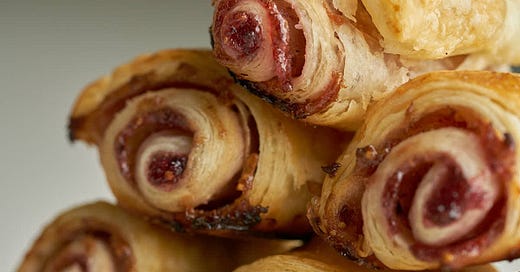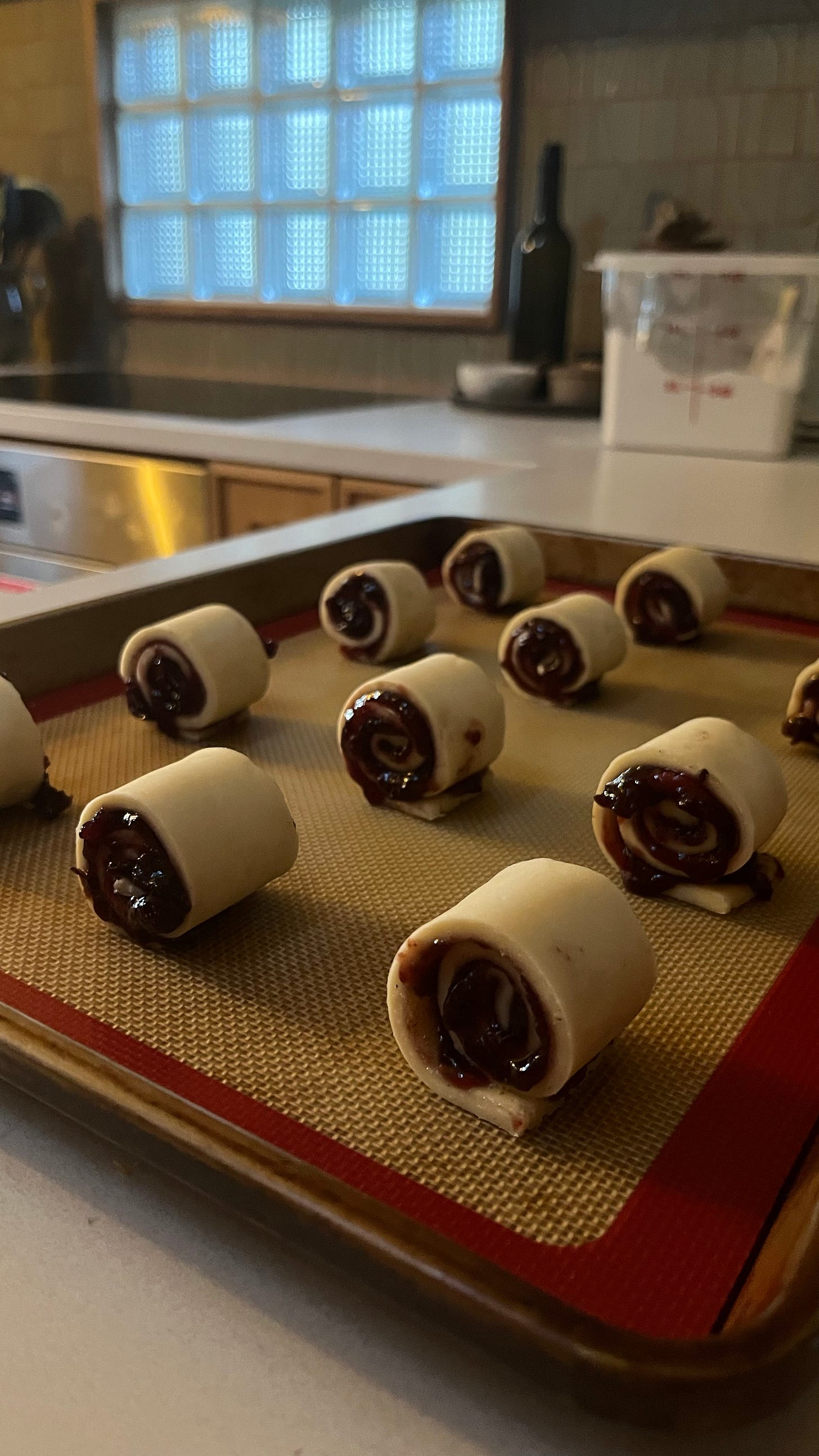Why I tested my rough-puff rugelach 9 (more) times!
The first half of October I went rugelach-crazy. Nine batches. Yes, you heard that right!
My rugelach is a recipe that has been years in the making. I felt reinvigorated to dive into another testing round after a visit to one of my favorite bakeries here in Portland, Baker and Spice. I tried their chocolate-cherry-cardamom rugelach, and thought, "This is incredible!" Their rugelach wasn’t like a flaky croissant; it was flatter, still flaky but not crunchy or puffy. I actually think this style of rugelach tastes better the next day when it gets chewier and loses a little bit of that initial flakiness. That’s exactly what I wanted for my version.
That delicious rugelach reignited my desire to get the recipe finished! So, I went home that Sunday after my farmers market trek, made a batch of rough puff pastry with my usual four turns to get those puffy layers, and got to work experimenting.
Bakers out there can attest that some recipes take way longer to perfect than others. Rugelach is just one of those that I’ve been testing on and off for a long time, having spurts of motivation and then leaving it alone for a while. Most of my early testing involved practicing the rough puff pastry and trying out different variations of rough puff from other bakers.
Not all rough puffs are created equal. You’d think there’d be one classic way to make it, but there are multiple interpretations. For example, Paul Hollywood’s recipe uses eggs, while others don’t. Some recipes use different kinds of flour—bread flour, cake flour, or a mix. There are also different methods, like the grated butter technique you’ve probably seen on The Great British Baking Show. Some versions have the butter folded into the dough layers, while others mix it directly in. I’ve tested SO MANY rough puff recipes—from sources like the BBC, Zöe Bakes, Allrecipes—and each one had unique challenges.
One thing I knew for sure while testing was that I didn’t want to use multiple types of flour. I wanted a recipe that relied solely on all-purpose flour, and ended up supplementing with cornstarch or arrowroot powder for that added bit of tenderness. Most people have cornstarch sitting around in their pantry anyway, and I wanted to create an easy, practical recipe that anyone could follow.
Once I had my ideal rough puff recipe and nailed down the important variables, like baking temperature and time, I needed to test different recipe tweaks: two turns, three, four, rolling the dough larger and thinner or smaller and thicker, using half a batch to make eight cookies, and then the same amount of dough to make 16 cookies.
Those last nine batches weren’t about starting the recipe testing from scratch—they were more about testing specific adjustments. I had already mastered the rough puff recipe. Now, it was all about fine-tuning—portioning the dough, the number of turns, how thick I should cut it, and how many spirals I wanted in each piece of rugelach. And similar to my challah recipe, I double-stack the baking sheets to prevent the bottoms of the rugelach from browning too quickly.
Finally, finally, I have a rough puff rugelach recipe I’m incredibly proud of! 🎉
Rugelach is usually made for Jewish holidays, and while I did miss the deadline on the Jewish High Holidays this year, I wasn’t too worried as most people don’t make rugelach for those holidays anyway. It IS prime time to be making tasty cookies for Hanukkah and Christmas, so, even though I missed the High Holidays, we are still in time for the upcoming holiday cookie season! I can’t wait to hear what you think.







